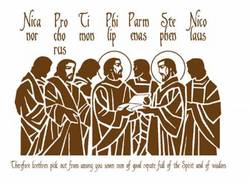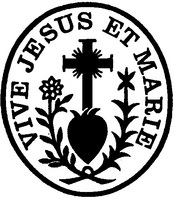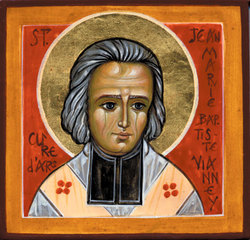On the feast of Saint Lawrence (August 10), the Cardinal Prefect of the Congregation for Clergy, Claudio Cardinal Hummes, OFM, wrote to the world's permanent deacons that what the Year of the Priest is also oriented toward the Order of Deacon and what is said to the priests applies very much to the deacons. This is welcome news!
I admire the vocation of deacons but I have had my fill of deacons who believe their vocation is undervalued, mis-understood or abused by priests. While there are tensions among some deacons and priests, the problem is often grossly reported. In recent weeks since the pope inaugurated the Year of the Priest I have heard deacons complaining that they feel "left out" by not having a spiritual/intellectual year dedicated to them as one is to the priesthood. The moaning distracts. Complaining is rather

tedious when you see the connections among the various hierarchies in our Church because none can exist without the other (even though the Church didn't have the permanent deaconate for long a period of time). Look at the witnesses of the sainted deacons through the millennia: Stephen, Ephrem, Francis among many. Quoting Pope "to work in favor of this pull of priests toward spiritual perfection, upon which, above all, depends the efficacy of their ministry," (discourse of March 16, 2009). Hence, I am happy to see something on the value of the permanent deacons in the Year of the Priest because the call and ministry of priests and deacons are intimately interrelated as is the call to the episcopacy in the service of the Gospel. Additionally, I am elated the Cardinal once again drew our attention to the need to know our Scripture and the practice of lectio divina. Proper and ongoing formation in the Lord and the Church requires careful attention to the place of Scripture and lectio. The letter said in part:
To know Revelation, to adhere unconditionally to Jesus Christ as a fascinated and enamored disciple, to base oneself always upon Jesus Christ and to be with Him in our Mission, this is then what awaits a permanent deacon, decisively and without any reservation. From a good disciple a good missionary is born.
The ministry of the Word which, in a special way for Deacons, has as its great model St. Stephen, Deacon and Martyr, requires of ordained ministers a constant struggle to study it and carry it out, at the same time as one proclaims it to others. Meditation, following the style of lectio divina, that is, prayerful reading, is one well traveled and much counseled way to understand and live the Word of God, and make it ones own. At the same time, intellectual, theological and pastoral formation is a challenge which endures throughout life. A qualified and up to date ministry of the Word very much depends upon this in depth formation.

The second reflection regards the ministry of Charity, taking as a great model St. Lawrence, Deacon and Martyr. The diaconate has its roots in the early Church's efforts to organize charitable works. At Rome, in the third century, during a period of great persecution of Christians, the extraordinary figure of St. Lawrence appears. He was archdeacon of Pope Sixtus II, and his trustee for the administration of the goods of the community. Our well beloved Pope Benedict XVI says regarding St. Lawrence: "His solicitude for the poor, his generous service which he rendered to the Church of Rome in the area of relief and of charity, his fidelity to the Pope, from him he was thrust forward to the point of wanting to undergo the supreme test of martyrdom and the heroic witness of his blood, rendered only a few days later. These are universally recognized facts." (Homily Basilica of St. Lawrence, November 30, 2008). From St. Lawrence we also take note of the affirmation "the riches of the Church are the poor." He assisted the poor with great generosity. He is thus an ever more present example to permanent deacons. We must love the poor in a preferential way, as did Jesus Christ; to be united with them, to work towards constructing a just, fraternal and peaceful society. The recent encyclical letter of Benedict XVI, Caritas in Veritate (Charity in Truth), should be our updated guide. In this encyclical the Holy Father affirms as a fundamental principle "Charity is the royal road of the social doctrine of the Church" (n. 2). Deacons must identify themselves in a very special way with charity. The poor are part of your daily ambiance, and the object of your untiring concern. One could not understand a Deacon who did not personally involve himself in charity and solidarity toward the poor, who again today are multiplying in number.



